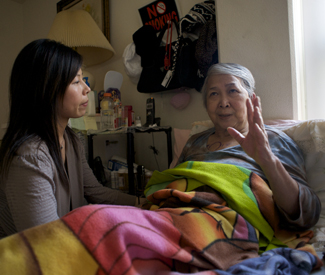In 1974, Charles Garfield was working in the acute care facility of the newly founded UCSF Cancer Center. A psychologist, Garfield had a patient named Jim Dees who had been diagnosed with Guillain Barré Syndrome. Dees’ body was rapidly deteriorating, and his prognosis was uncertain.
Garfield met with Dees for an evaluation. He quickly realized that Dees had no pathologies, no phobias — nothing for a mental-health professional to treat. He was simply “an extraordinarily aware man facing an ugly death,” Garfield later wrote.
Instead of leaving his care to physicians and nurses, Garfield ontinued to meet with Dees — not so much as a trained psychologist, but as a peer. He became someone Dees could talk to and share his fears, someone he could rely on for practical support after he was discharged from the hospital.
Dees was the first client of what Garfield would call the Shanti Project, and the basis for the sort of peer-to-peer, volunteer caregiving that has become a model for an estimated 600 organizations all over the world. It’s an organization that’s been a crucial thread in the fabric of San Francisco’s history. When the AIDS epidemic struck in the 1980s, the city asked Shanti to step in. In the early years of the epidemic, basically every person with AIDS had some form of contact with Shanti, Garfield estimates.
“If you had taken what we did away, I have no idea what many of those folks would have done,” says Garfield. “The catastrophe would have been unimaginable.”
Kaushik Roy, a former volunteer who is now the organization’s executive director, notes: “We do for our clients what you or I might do if one of our family or close friends got sick. It’s the difference between having one person there for you, or none at all.”

